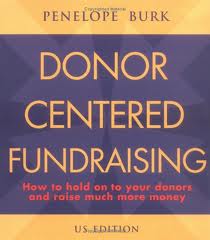 Last week I spent an hour on the phone with Jay Love, the founder and CEO of Bloomerang, which is the new online donor management and retention service. Jay is the same guy who brought eTapestry to the non-profit industry before selling it to Blackbaud a few years ago. It was during the product demonstration with Jay that I had the following thoughts:
Last week I spent an hour on the phone with Jay Love, the founder and CEO of Bloomerang, which is the new online donor management and retention service. Jay is the same guy who brought eTapestry to the non-profit industry before selling it to Blackbaud a few years ago. It was during the product demonstration with Jay that I had the following thoughts:
- Donor retention is a huge issue that is killing too many fundraising programs.
- There are tons of tools and best practices available for those wanting to tackle this problem.
- The root problem contributing to the donor retention epidemic is likely lack of resources and time for most non-profit organizations.
- The solution doesn’t have to be complicated. In fact, simple solutions are probably the most sustainable.
Let’s take a few minutes to flesh out a few of these thoughts.
Donor turnover is an epidemic
 Allyson Kapin at frogloop blog did a nice job of capturing this issue and included an awesome infographic from Bloomerang in her post titled “Strategies to Increase Nonprofit Donor Retention Rates“.
Allyson Kapin at frogloop blog did a nice job of capturing this issue and included an awesome infographic from Bloomerang in her post titled “Strategies to Increase Nonprofit Donor Retention Rates“.
- Non-profit donor retention rates currently stand at 41%.
- The turnover rate is getting worse not better.
- Our for-profit cousins do a substantially better job with customer retention. Their retention rate is 94%.
- Non-profits seem to do better with retaining larger donors than smaller donors.
The problem is likely rooted in the non-profit sector’s short-term view when it comes to revenue generation. So, we over-invest in cultivating new donors and under-invest in stewarding existing donors. When we do invest in stewardship activities, it is focused on larger donors and not the base of our giving pyramid — smaller donors.
Best practices and tools
 Penelope Burk tells us in her book Donor Centered Fundraising that donor retention is as simple as:
Penelope Burk tells us in her book Donor Centered Fundraising that donor retention is as simple as:
- Thanking donors promptly. Being enthusiastic. Being personal.
- Circle back around to donors and show them that you’re using their contribution in the manner that you told them you would when you originally solicited the contribution.
- Circle back around again and tell donors what impact / outcome their charitable had with your clients and throughout the community.
Of course, the devil is in the details. I believe it is HOW you go about accomplishing these three simple principles where people get tied in knots and lose their way.
Consider this list of donor retention tools and communication opportunities:
- There are countless donor management services and products (e.g. Blommerang, eTapestry, Results Plus, Raisers Edge, etc).
- There are countless social media tools (e.g. Facebook, Twitter, Pinterest, LinkedIn, Constant Contact, etc).
- There are paper newsletters and eNewsletters.
- Annual reports
- Impact reports
- Annual meetings and town hall meetings
- Mailings and phone calls
- Personal visits
In fact, Penelope Burk spends a number of pages in her book talking about what the donors who she surveyed like and dislike.
Back to basics
 If there is one thing I know about the vast majority of non-profit organization, it is that they are busy and overwhelmed. Looking at the donor retention statistics and the long list of remedies only adds more fuel to that fire.
If there is one thing I know about the vast majority of non-profit organization, it is that they are busy and overwhelmed. Looking at the donor retention statistics and the long list of remedies only adds more fuel to that fire.
So, it makes sense to simply.
If you’re a small non-profit organization and want to improve your donor retention rate, do the following two things:
- Set aside one afternoon every month to call donors who made a contribution in the last four weeks. Get through as many as you can. Make sure you are enthusiastic about their gift and generally tell them how you plan on putting their gift to work. Ask them how they would like you to communicate with them in the future (e.g. newsletter, eNews, snail mail letters, etc), and make sure you follow-through on your promise.
- Set aside enough time in your weekly schedule to sit down with one of your top individual donors every week. Share a cup of coffee or buy them lunch. It doesn’t matter. While you have a little bit of their time, casually share success stories. Tell them that those successes wouldn’t have been possible without their help and generosity. Do this once a week and you will meet with your Top 50 individual donors over the course of a calendar year.
I have worked in small non-profit organizations. Doing these two things is not unrealistic for an executive director or fundraising professional.
What is your agency doing to stem the rising tide of donor turnover? Please use the comment box below to share your thoughts. We can all learn from each other.
Here’s to your health!
Erik Anderson
Founder & President, The Healthy Non-Profit LLC
www.thehealthynonprofit.com
erik@thehealthynonprofit.com
http://twitter.com/#!/eanderson847
http://www.facebook.com/eanderson847
http://www.linkedin.com/in/erikanderson847

3 comments